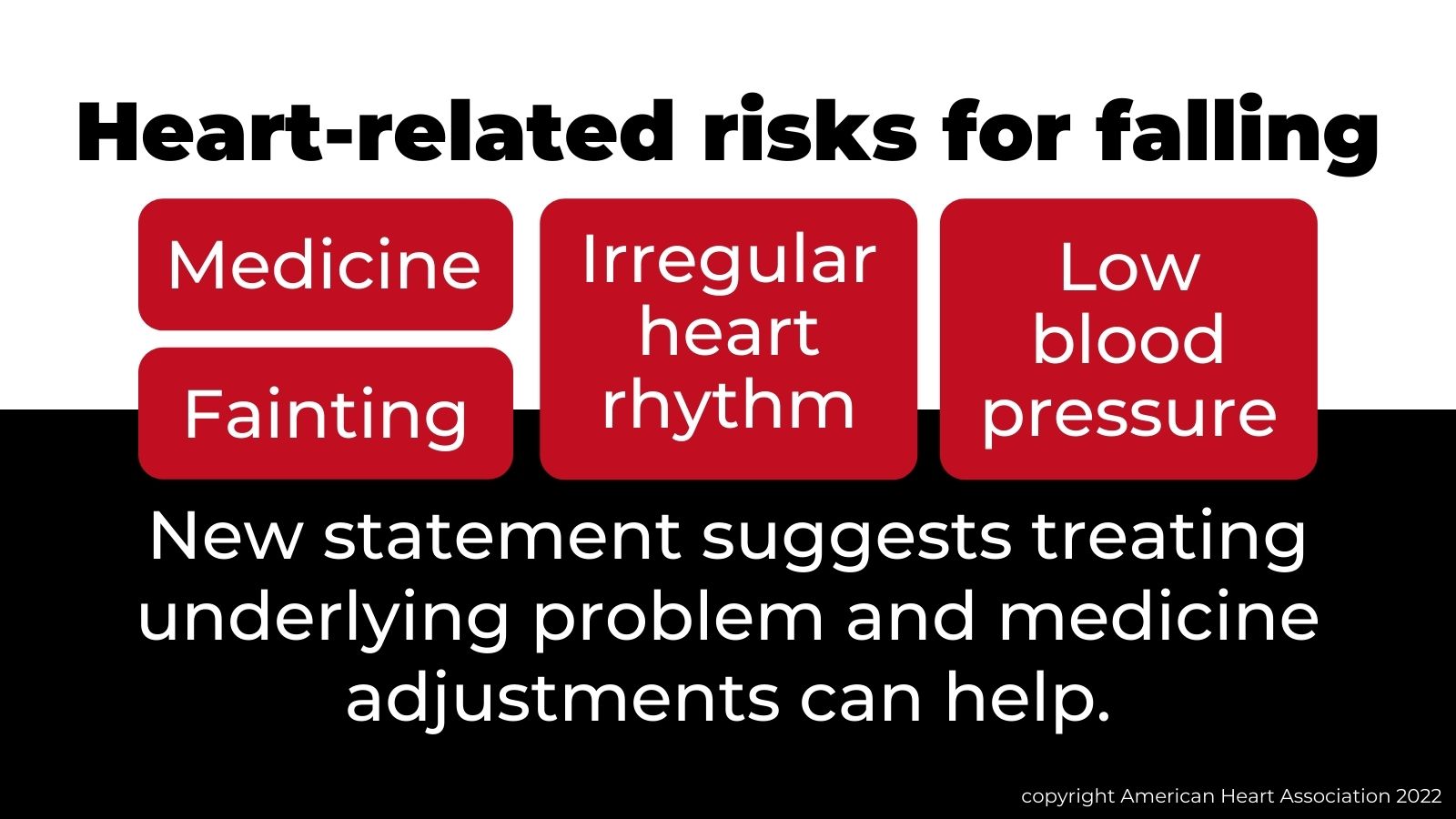American Heart Association Scientific Statement

Downloadable Infographic and transcript available on the right column of release link.
DALLAS, May 19, 2022 – A new American Heart Association scientific statement addresses ways to prevent falls among adults with cardiovascular disease, published today in Circulation: Cardiovascular Quality and Outcomes, an American Heart Association journal.
Statement Highlights:
- Falls and fear of falling are a major health issue, and they are associated with high injury rates, high medical care costs and significant negative impact on the quality of life.
- 40% to 60% of adults with cardiovascular disease are at risk for falling.
- Increased fall risk is associated with medications, structural heart disease, heart failure, low blood pressure conditions, irregular heart rhythms, trouble walking or difficulty with balance, sensory and cognitive impairment, physical frailty and environmental hazards (things that cause trips or slipping).
- Medications that increase risk of falls include those that treat diabetes, high blood pressure, irregular heart rhythms, anxiety, depression and epilepsy. In addition, digoxin, diuretics, antipsychotics, opioids and sleep medications can increase fall risk.
- A condition called orthostatic hypotension, which causes blood pressure to drop dramatically upon standing, affects up to 30% of people over age 60, and is a risk factor for falling.
- Fainting, whether caused by heart or neurological issues, increases with age and can lead to a fall.
- Strategies to address fall risk include medication adjustments, reassessing treatment plans, considering non-drug treatment options and properly managing heart rhythm disorders.
- Treatment plans should include close collaboration with the patient and their support network of family and friends.
American Heart Association scientific statements promote greater awareness about cardiovascular diseases and stroke issues and help facilitate informed health care decisions. Scientific statements outline what is currently known about a topic and what areas need additional research. While scientific statements inform the development of guidelines, they do not make treatment recommendations. American Heart Association guidelines provide the Association’s official clinical practice recommendations.
The Association receives funding primarily from individuals. Foundations and corporations (including pharmaceutical, device manufacturers and other companies) also make donations and fund specific Association programs and events. The Association has strict policies to prevent these relationships from influencing the science content. Revenues from pharmaceutical and biotech companies, device manufacturers and health insurance providers, and the Association’s overall financial information are available here.
Additional Resources:
About the American Heart Association
The American Heart Association is a relentless force for a world of longer, healthier lives. We are dedicated to ensuring equitable health in all communities. Through collaboration with numerous organizations, and powered by millions of volunteers, we fund innovative research, advocate for the public’s health and share lifesaving resources. The Dallas-based organization has been a leading source of health information for nearly a century. Connect with us on heart.org, Facebook, Twitter or by calling 1-800-AHA-USA1.
###
For Media Inquiries: 214-706-1173
Maggie Francis: 214-706-1382; Maggie.Francis@heart.org
For Public Inquiries: 1-800-AHA-USA1 (242-8721)






Leave a Reply